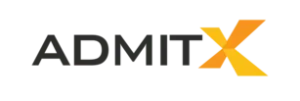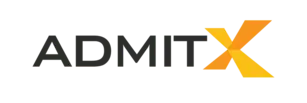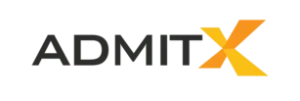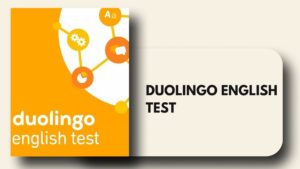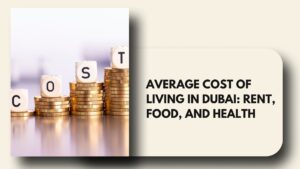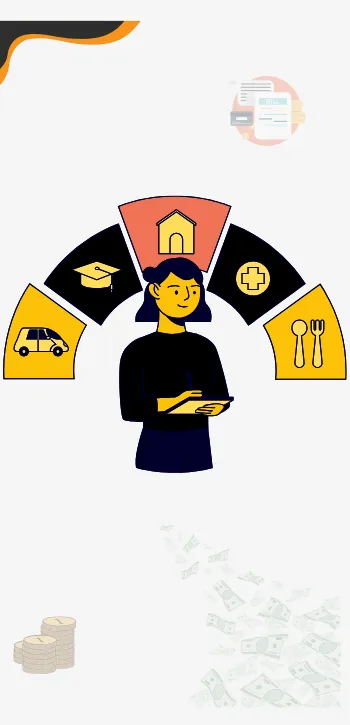- France has two main study intakes for international students: September (Fall) and January (Spring), with the September intake being the primary and most popular option, offering a wider range of programs and opportunities.
- The Fall intake aligns better with scholarship deadlines, academic calendars, and internship cycles. In contrast, the Spring intake is suitable for those who miss the September deadlines or seek smaller classes and less competition.
- Program availability, scholarship chances, and career opportunities are significantly better in the Fall intake, so students should choose their intake based on academic goals, readiness, and course availability.
Planning to study in France is an exciting journey, but before you dive into university applications and course selections, one crucial decision awaits: choosing the right intake. French universities offer two main intakes: Fall (September) and Spring (January).
While both provide excellent academic opportunities, they differ in terms of program availability, admission timelines, visa processing, and even cultural experiences. Making the right choice can significantly impact your study plan and transition to life in France.
In this blog, we’ll explore the features of both intakes and guide you in selecting the one that best fits your academic and personal goals.
How Many Study Intakes in France?
The academic calendar in France features two main intakes for international students.
- Fall or September Intake
- Spring or January Intake
These intakes are named according to the month or season they begin. Among them, the September (Fall) intake is the primary and most popular one, offering the broadest selection of programs and institutions. The January (Spring) intake is less common but still provides a range of options, especially for certain courses and institutions.
| Intakes | Application Cycle | Class Commencement |
|---|---|---|
| Fall (September) | September/October 2024-April 2025 | September 2025 |
| Spring (January) | June 2024-October | January 2026 |

Fall Intake in France
The September intake, also referred to as the Autumn or Fall intake, is the primary academic session in French universities. It is the most popular and widely available intake for both undergraduate and postgraduate programs.
With the largest number of international applications, it offers a wide variety of courses, scholarship opportunities, and a vibrant student life.
If you’re planning to pursue higher education in France, the Fall intake provides the greatest flexibility, course diversity, and support systems, making it the ideal choice for most international students.
Top Benefits of Fall Intake in France
Extensive Course Availability: Most French universities open the majority of their undergraduate, postgraduate, and doctoral programs for the September intake, giving students more choices in disciplines and institutions.
Greater Scholarship Opportunities: Many government and institutional scholarships, including Eiffel Scholarships, Charpak, and university-specific awards, are aligned with the Fall intake deadlines, offering better chances of financial aid.
Enhanced Career Prospects: Starting in September allows students to take full advantage of internship cycles, career fairs, and post-study work opportunities, many of which are scheduled throughout the academic year.
Active Student Life and Orientation Programs: Universities organize orientation weeks, campus activities, and club registrations during this intake, giving international students the opportunity to integrate easily and make connections from the start.
Aligned with the Global Academic Calendar: The September intake aligns with many countries’ academic schedules, ensuring a smoother transition for students coming from different educational backgrounds.
Timeline of the Fall Intake 2026 in France
Start of Classes: Early to Mid-September 2026
Application Period: October 2025 to April 2026
Deadlines: Vary by university (commonly between February and April)
Visa Application: April to July 2026
Arrival in France: August to early September 2026
| Important Steps for Students | Ideal Timeframe for 2026 Fall Intake |
|---|---|
| Research & Shortlist Universities | April-July 2025 |
| Prepare for Standardised Tests | June-October |
| Begin Applications | August-November |
| Submit Applications | November-January |
| Admission Decision | January-March |
| Apply for French Study Visa | March-June |
| Fly to France | July-August |
Popular Universities in France Offering Fall Intake
Below, we have tabulated the popular universities in France that offer admission for the fall intake.
- Sorbonne University
- Université Paris-Saclay
- Université Grenoble Alpes
- University of Strasbourg (Université de Strasbourg)
- Université de Bordeaux
- Université de Lyon (Lyon 1, Lyon 2, Lyon 3)
- Aix-Marseille University
- University of Lille (Université de Lille)
- Université de Montpellier
- University of Rennes (Université de Rennes 1 & 2)
Popular Courses Offered in Fall Intake
The Fall intake offers a wide range of programs across all levels of study in the French universities.
- Engineering and Technology
- Business & Management
- Computer Science & Data Analytics
- Fashion and Luxury Brand Management
- Culinary Arts & Hospitality
- International Relations and Political Science
- Architecture & Design
- Life Sciences & Public Health
- Art, Culture, and Media Studies
- Social Sciences & Psychology
Spring Intake in France
The January intake, also known as the Spring intake, is the second most common admission cycle for French universities. While fewer programs are available compared to the September intake, it remains a valuable opportunity for students who missed the Fall deadline, need additional preparation time, or are applying for specific postgraduate courses.
This intake is particularly popular for Master’s programs in fields such as Business, Engineering, Computer Science, and International Management. Many institutions offer accelerated or flexible academic calendars for Spring entrants to ensure a smooth transition.
Top Benefits of Spring Intake in France
Alternative Entry Point: If you missed the Fall intake or needed extra time for language tests, visa processing, or finances, the Spring intake offers a second chance to begin your studies without waiting a full academic year.
Smaller Class Sizes: Spring cohorts tend to be smaller, which often leads to more individualized attention from professors and better student-teacher interaction.
Lower Competition: Since fewer students apply for the Spring session, acceptance rates can be higher, especially for competitive programs.
Shorter Waiting Time for Graduation: For students applying mid-year, the Spring intake allows them to graduate within the same academic timeline, especially for programs that offer multiple intakes with continuous modules.
Faster Integration into Internships: Starting in January means students complete coursework in time for summer internships, enabling early career exposure and industry experience.
Timeline for the Spring Intake 2026 in France
Start of Classes: January to early February 2026
Application Period: June to October 2025
Application Deadlines: Usually between September and October 2025
Visa Application Window: October to December 2025
Arrival in France: December 2025 to early January 2026
| Important Steps for Students | Ideal Timeframe for 2026 Spring Intake |
|---|---|
| Research & Shortlist Universities | April – July 2025 |
| Prepare for Standardised Tests | May – August 2025 |
| Begin Applications | June – August 2025 |
| Submit Applications | September – October 2025 |
| Admission Decision | October – November 2025 |
| Apply for French Study Visa | October – December 2025 |
| Fly to France | January 2026 |
Popular Universities in France Offering Spring Intake
Here are some top universities in France that offer select programs during the Spring intake:
- NEOMA Business School
- INSEEC Business School
- Paris School of Business
- EDC Paris Business School
- SKEMA Business School
- Toulouse Business School (TBS Education)
- ICN Business School
- Montpellier Business School
- IESEG School of Management
- ESC Clermont Business School
Popular Courses Offered in Spring Intake
While not all programs are open for the January intake, many institutions provide options in high-demand fields:
- International Business & Management
- Finance and Accounting
- Computer Science & Data Analytics
- Engineering (Selective fields)
- Luxury Brand & Fashion Management
- Marketing & Digital Communication
- Supply Chain & Logistics
- Hospitality & Tourism
- Entrepreneurship & Innovation
- International Relations
Factors to Consider while Choosing a Study Intake in France
Selecting the right intake is a crucial part of planning your studies in France. French universities primarily offer two intakes, September (Fall) and January (Spring). However, not every program is available in both sessions. Here are some essential factors to help guide your decision:
Program Availability
French institutions generally open most of their undergraduate and postgraduate programs during the Fall intake. The Spring intake offers fewer options and is typically limited to select Master’s programs, especially in business, management, and technical fields. Always check the course availability of your target universities.
| Intake | Availability of Programs |
|---|---|
| Fall | All programs are available (UG, PG, Diploma, etc.) |
| Spring | Only selected programs are available (depending on the university) |
Scholarship Opportunities
Many top scholarships in France, such as the Eiffel Excellence Scholarship or the Charpak Program, are mainly aligned with the Fall intake. If you are seeking financial aid, applying for the September session may provide more opportunities for funding.
Competition and Acceptance Rates
The Fall intake generally sees the highest number of applicants, making admission more competitive. However, the Spring intake tends to attract fewer students, which might offer better chances of acceptance for certain programs and universities.
Internship and Placement Opportunities
Most internship and placement opportunities in France align with the academic calendar, starting in September. If you begin your studies in January, you may need to adjust your academic timeline to fit internship or job recruitment cycles, which often start later.
Key Takeaways by AdmitX
France offers two main study intakes for international students: the Fall intake (September) and the Spring intake (January). The September intake is the primary and most popular session, with the widest range of undergraduate and postgraduate programs across universities. It also aligns with the traditional academic calendar, making it ideal for students seeking more options in courses, scholarships, and internships.
The January intake is the secondary option, generally limited to select Master’s programs, particularly in business, management, and technical fields. While it offers fewer courses, it provides a great alternative for students who miss the September deadlines or need additional time for preparation.
FAQs
How many study intakes are there in France?
France generally has two main intakes for international students: September (Fall) and January (Spring). The September intake is the primary academic session, offering the largest number of courses across a wide range of universities and institutions.
The January intake is a secondary option with fewer program choices, mainly in selected Master’s degrees and specialized fields.
Which is the best intake to apply for in France?
The September intake is considered the best option for most students. It offers the broadest selection of undergraduate and postgraduate programs, more scholarship opportunities, and aligns with the standard academic calendar in France. This intake also gives students access to orientation programs, networking events, and a fuller campus experience.
Can I apply for scholarships in the January intake?
Yes, you can apply for scholarships during the January intake, but your options may be more limited. Most French universities and government-funded scholarships are released during the September intake, so applying in the fall may increase your chances of securing financial aid.
However, some institutions still offer merit-based and program-specific funding for January applicants.
Do all universities in France offer courses in both intakes?
No, not all universities offer the same courses in both intakes. The majority of undergraduate programs begin only in September, while some postgraduate courses, especially in business, management, and engineering, may be available in January.
It is important to check the course-specific intake information on the university’s official website before applying.
Is it easier to get admission in the January intake due to fewer applicants?
Yes, generally, the January intake sees fewer applications, which could increase your chances of acceptance. However, it’s important to note that fewer courses are available, and some extracurricular activities or internship opportunities may be limited compared to the September session. If you need more preparation time or miss the fall deadlines, January can be a good alternative.
